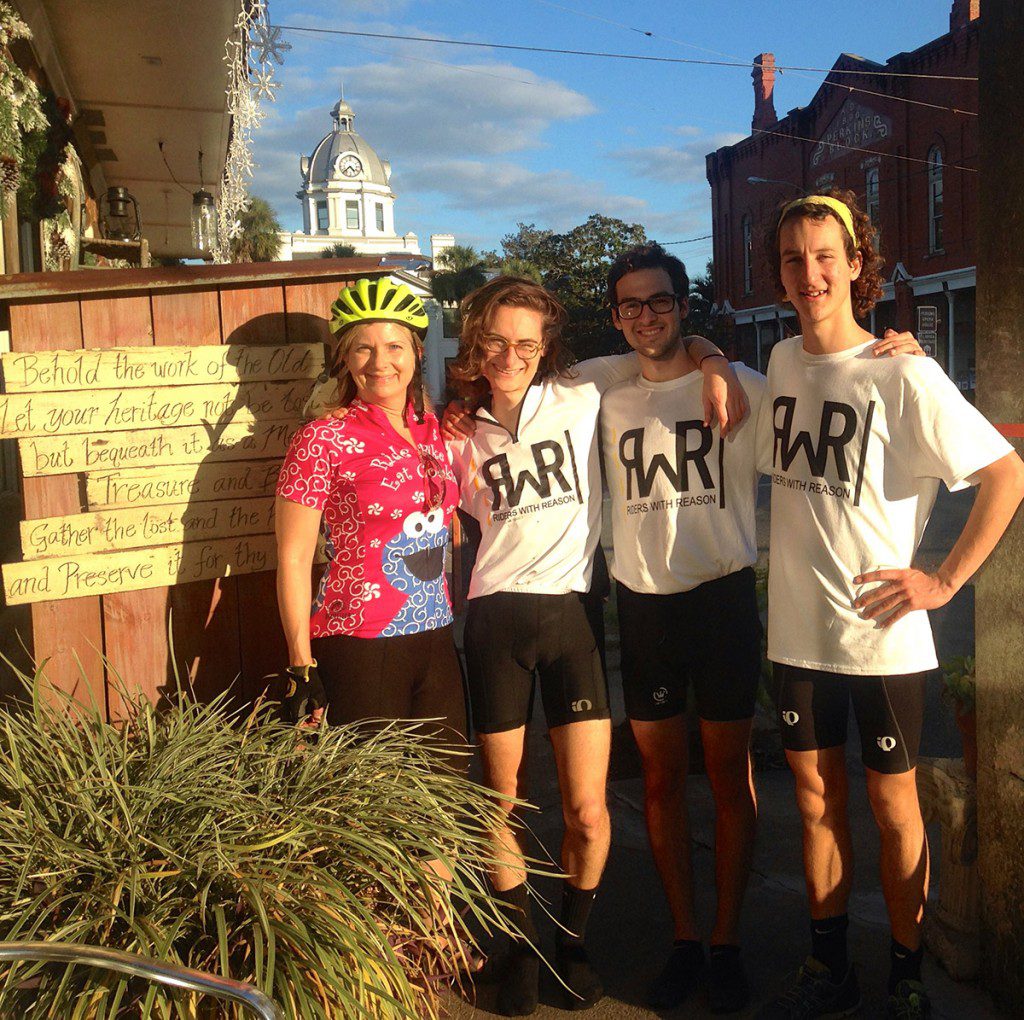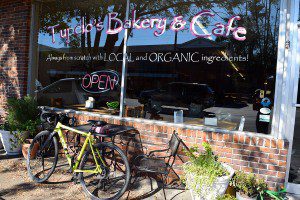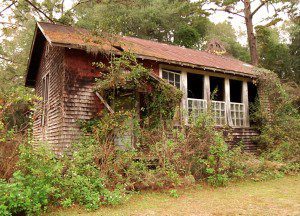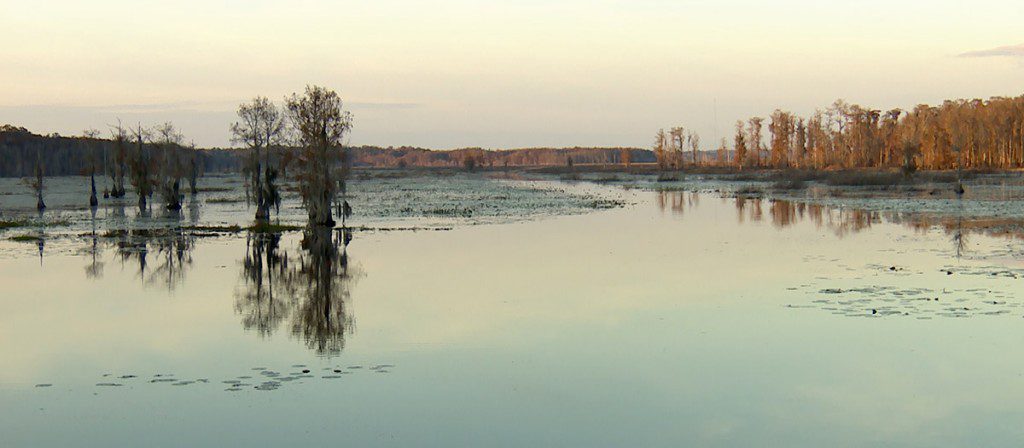Welcome to Part 10 (of 10) of Roaming the Red Hills, which originally aired on the April 14 episode of WFSU’s Local Routes. Through ten 3-minute videos, we’ll explore the natural soul of the Red Hills of Florida and Georgia, from the pine uplands down to its rivers, lakes, and farms. Thanks to Tracy Horenbein for creating original compositions for this video series. The series is narrated by Jim McMurtry.
Funding for Roaming the Red Hills was provided by Tall Timbers Research Station and Land Conservancy.
Rob Diaz de Villegas WFSU-TV
“First impressions put aside, I soon began to appreciate that Jefferson County was- and for the most part continues to be- a beautiful environment.”
-Dr. Flossie Byrd, Echoes of a Quieter Time
Disappointed at being uprooted from Hanes City, Florida, the Byrd siblings soon discovered Lake Miccosukee, Ward Creek, and forests in which to play. Those Monticello woods and waterways fed them with ducks, geese, quail, wild turkey, and, as we see in the video, coot that would “fall off the bone”. In her book, Echoes of a Quieter Time, Flossie Byrd fondly remembers that “A number of the women were excellent cooks who could prepare ‘coons ‘n possums’ that were a ‘gourmet’s delight.'” (Page 86) It was an environment that entertained and fed Dr. Byrd and her sixteen siblings after the relocation of the original seven in 1940.
In the video above, Georgia Ackerman leads the Riders with Reason through some of that environment, traveling down Monticello’s West Lake Road. They were following the Miccosukee-Magnolia Trail, one of four Heritage Roads mapped out by the Jefferson County. The Riders passed by the Byrd residence, where some of the family still lives today. They rode over Ward’s Creek and alongside Red Hills hunting plantations, and over to a little rocky road leading to Lake Miccosukee. They also passed Junious Hill Missionary Baptist Church, and Ford Chapel African Methodist Episcopal Church. The two churches, each with its own school, were the center of African American communities on the north side of the lake. Each dates to the mid-1800s (the site of the Junius Hill church moved in the early 1900s, and the name at some point changed spelling to Junious).
As a long time educator, Dr. Byrd talked to us at great length about these two schools. Students helped the teachers gather firewood to heat the classroom. They helped cook lunch. They’d walk a couple of miles down the road to visit with the other school. Many of the children worked part of the day on their family’s farms. In a lot of ways, this sounds like a modern progressive school curriculum.
As the Byrd children completed the seventh grade, they began attending the Howard Academy in Monticello. It was a six mile walk each way. If it was cold, they’d have to sneak out of the house before their mother noticed. “Once we did this and she told use that when she went outside and discovered how cold it really was, she cried. She thought that her children would freeze to death or at the least be frostbitten.” (Echoes, page 77) White students in 1940s Jefferson County rode the bus to school, often passing the Byrd children on their walk. “The White students often tossed objects at us from the windows, most often wet items. Whether or not these were spitballs or simply wads of wet toilet tissue was not determined.” (Page 77)
Despite the challenges, Dr. Byrd and her brothers and sisters thrived as students. Of the seventeen Byrd children, most graduated college, while six have Masters degrees and two have PhDs (Flossie and Wayne Calvin). In researching her book, Dr. Byrd found that many of her contemporaries in the Junious Hill and Ford Chapel schools found success as well. “Eventually descendants of the Junious Hill and Ford Chapel communities became teachers, doctors, pharmacists, university administrators, health care professionals…” (172) However, this success often achieved outside of Monticello. In the video, Dr. Byrd wistfully recalls how her generation moved on until “there wasn’t anybody here to farm.” As she tells it in her book, “Today, you can overhear some of the descendants, who long for the country, wishing out loud that they and some land to which they could return.” (172) After retiring as provost of Prairie View A&M University in Texas, Dr. Byrd returned to a house on her family’s land. In addition to Echoes of a Quieter Time, she has written a history of education in Jefferson County.

WFSU Producer Rob Diaz de Villegas interviews Dr. Flossie Byrd, author of “Echoes of a Quieter Time”.
Jefferson County’s Heritage Roads
The path followed by cyclists in the video above is one of four trails charted by Visit Jefferson County, called Heritage Roads. Each trail highlights different wilderness or historic landmarks. Flossie’s story unfolds along the Miccosukee- Magnolia Trail (all trail links are PDFs), which is the shortest and closest to Monticello. The trail passes three Red Hills hunting plantations, as well as the Junious Hill and Ford Chapel churches. If you’re traveling the trail by car, you can turn down a rocky road leading to Hopkins Landing for a scenic view of Lake Miccosukee (you’ll see some shots from there in the video).
The Plantation Trail makes a loop along the north half of Jefferson County, passing along several antebellum plantations. After the Civil War, many of these were purchased by northerners and turned into private hunting preserves. One of these, the genotypesDixie Plantation, was recently donated to Tall Timbers Research Station and Land Conservancy for research purposes, though it does host events like the Continental Field Trial, a competition for hunting dogs (some of which you can see in action on our first installment of Roaming the Red Hills).
The Flatwoods- Wilderness Trail is the longest, and it takes you to points of interest along the Wacissa and Aucilla Rivers (including the Aucilla River Sinks), as well as to the St. Marks National Wildlife Refuge. The Spanish Trace Trail covers central Jefferson County.
Riders with Reason
Cycling with Georgia Ackerman in this video were Benji Shaknwitz, Phil Mendez, and Brandon LaRosa of Riders with Reason. Riders for Reason is a nonprofit group promoting road safety through bike tours. They are currently working on a bike safety film with students from FSU.

Tupelo’s Bakery
Before riding out on West Lake Ride, we met at Tupelo’s Bakery in downtown Monticello. I first ate at Tupelo’s on New Leaf Market’s Farm Tour, during which they host Full Moon Apiary. Full Moon brings a beehive, which is fun to see.

Located directly on highway 90 in Monticello, Tupelo’s see a fair amount of bike traffic coming from Tallahassee.
As you see in the video, Tupelo’s makes use of locally sourced farm goods, and the bakery itself is a member of the Red Hills Small Farm Alliance. The RHSFA is a collective of local small farms. The centerpiece of the Alliance is the Red Hills Online Market, from which consumers can purchase from multiple farms and pickup at a centralized location. Farmers we’ve interviewed in the past say that often, they don’t have enough harvest to sell to grocery stores; the online market gives them an outlet (Having ordered from the market, I can say that you have to log in early to get certain items).
On Roaming the Red Hills, we visited another Farm Alliance member, Sweetgrass Dairy in south Georgia, and have visited a few of the farms in the past.
Lake Miccosukee at a Glance
- Located entirely within Jefferson County with its western edge bordering Leon County.
- 6312 Acres
- One of four sinkhole lakes in the Red Hills. Each of the lakes is directly connected to the Floridan Aquifer, and each had historically had its water disappear into the sinkhole at regular intervals. With the exception of Lake Jackson, each of the lakes had their sinkholes dammed to prevent this drawdown. Lake Iamonia has had its dam removed. Lake Miccosukee was dammed in 1954. As with the other lakes, the interruption of its natural cycle resulted in the lake being clogged with vegetation. You can see a good example of this phenomenon when we visited another of the sinkhole lakes, Lake Lafayette. In 1999, the gates of the dam were opened and the lake drawn down. During this time, the lake bottom was burned to eliminate excess vegetation. You can read more about the lake in this report by McGlynn Labs.
- Lake Miccosukee is a fishing and duck hunting destination. Florida Fish and Wildlife has specific rules regarding waterfowl hunting in our area’s lakes.
Come adventure with us in the Red Hills, Apalachicola River and Bay, the Forgotten Coast, and More! Subscribe to the WFSU Ecology Blog by Email.


